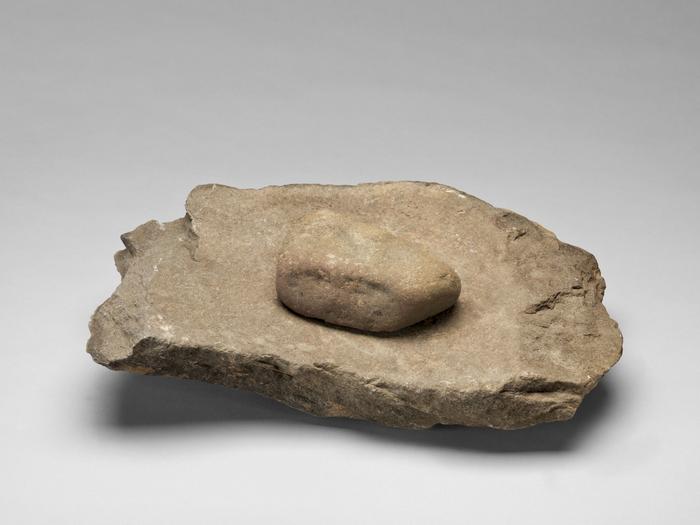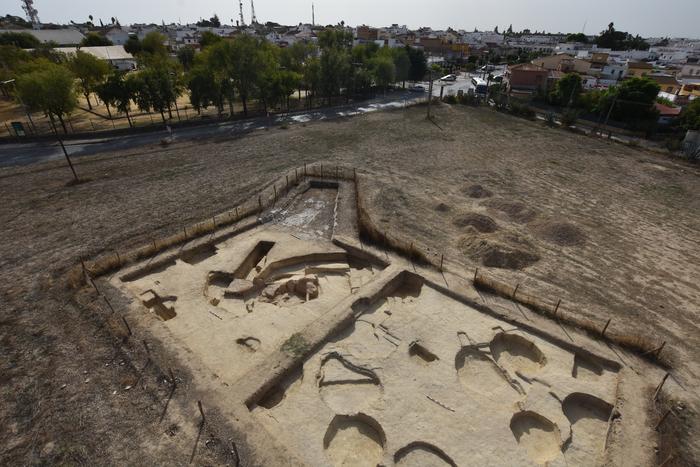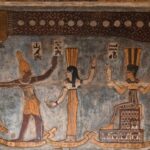A non-exploitative economy favoured the splendor of the Iberian Peninsula’s Copper Age communities
A study by UAB researchers describes the productive forces of the Chalcolithic communities of the southern half of the Iberian Peninsula as being very diverse, both in the type of tasks performed and in intensity, with a high degree of cooperation and no apparent signs of dependence between the different types of settlements or of political centralization. The work, based on the analysis of macrolithic tool data and the additional support of bioarchaeological information, allows to confirm the large ditched enclosure of Valencina de la Concepción (Seville) as a macro-populated area, inhabited by thousands of people, and not only as a place of worship.

The richness and productive diversity of the Chalcolithic communities of the southern half of the Iberian Peninsula, dating back 5,100 to 4,200 years ago, were produced without signs of economic exploitation or marked social hierarchies and with a high degree of cooperation. This economic organization, based on a great variety of resources and tasks, was present in almost all settlements, independently of their type or dimensions, and would have been crucial for the great social, architectural and demographic dynamics and development reached by the societies of the peninsular Copper Age.
This is the conclusion of researchers from the Department of Prehistory of the Universitat Autònoma de Barcelona (UAB) Marina Eguíluz, Selina Delgado-Raack and Roberto Risch in a study published in the Journal of World Prehistory, in which they analysed data on large stone tools (macrolithic artifacts) from the Copper Age to learn about the economic pattern of the different types of settlements that existed.
“Determining whether these settlements were distinguished by specific modes of production, with a characteristic economy between monumental ditched or fortified enclosures versus those located on hills and more open spaces, is fundamental to the ongoing debate on whether or not it is relevant to talk about social complexity when we refer to the Chalcolithic societies of the Iberian Peninsula and their political organization,” explains Marina Eguíluz.
The Copper Age communities of the Iberian Peninsula produced one of the most important archaeological records of late prehistory, but at the same time also one of the most puzzling for specialists. How and why they achieved this great economic and social complexity, made evident by the number and size of the settlements, the creative capacity reflected in their objects, and the enormous circulation of goods that took place, is still a matter of debate.
Much variability and no signs of political centralization
The study describes the productive forces of these communities based, above all, on the macrolithic artifacts, essential tools for achieving a large part of the tasks undertaken in the Copper Age. The result is the finding of a great variability, both in the type of tasks performed and in their intensity, and without apparent signs of political dependence or centralization. This variability prevailed over specialization, particularly in cereal production, and is not explained by aspects such as geographical location, form of occupation or monumentality.
There is nothing to indicate that the fortified settlements stored large amounts of surplus and dominated the ditched settlements or vice versa, researchers point out.
“What we observe is that productive diversity and, one would think, the exchange of products, knowledge and people between communities was fundamental in this period of exceptional economic, social and creative development,” says Selina Delgado-Raack.
Each community would have organized its economy in the most productive way possible, taking into account its surroundings, population size and social conditions. The large ditched settlements had all the tools necessary to carry out the routine work of a community, without specific accumulations of certain materials, such as cereals or arrowheads.
This result is especially relevant in the case of the monumental site of Valencina de la Concepción (Seville), with an extension of more than 250 hectares and multiple ditches.
“The study of more than 150 macrolithic artifacts from the northern part of the site has made it possible to correlate subsistence activities such as milling or stone and fiber-work with habitation structures, confirming that this was a macro settlement occupied by thousands of inhabitants and not a place of worship,” said Marina Eguíluz.

Cooperative affluent societies
The strategy of productive diversity detected would be in line with what researchers have called ‘cooperative affluent societies’ of the late prehistory of Europe and the Middle East.
“These societies were characterized by generating considerable material wealth and at the same time limiting the possibility of exploitation of the labor force and, consequently, the production of surplus value, contrary to what happened later with the Argar society,” explains Roberto Risch. “Their organization challenges a unique thought of our times, according to which the production of wealth of any historical era requires the presence of a ruling class or group,” adds the researcher.
The organization proposed by the researchers does not imply that violence was a foreign element to Chalcolithic Iberia. In fact, the findings at some sites suggest that there was,
“but it was not an omnipresent aspect, a fact that is also confirmed by the anthropological record. Instead of a means to subjugate the population and demand obedience, violence could have been a strategy to achieve the opposite, i.e., to defend a rich society with a high degree of cooperation,” says Roberto Risch.
In the study, the researchers analysed macrolithic artifacts that Copper Age groups from eighteen sites used for a multitude of tasks, such as grinding cereals, processing food, crushing minerals, cutting stones, waterproofing ceramics, dressing leather, forging and sharpening metal tools and weapons, felling trees and working wood, or butchering animals.
“These are key tools for understanding the economy of a society and how tasks are distributed,”
explain the researchers. The results obtained are in line with other bioarchaeological data (botany, fauna, paleo-nutritional) available for sites of the same period.
Bibliographic information:
Eguíluz, M., Delgado-Raack, S. & Risch, R. The Strength of Diversity: Macrolithic Artefacts and Productive Forces During the Chalcolithic of Southern Iberia. J World Prehist (2023). https://doi.org/10.1007/s10963-023-09178-2
Press release from the Universitat Autònoma de Barcelona – UAB

